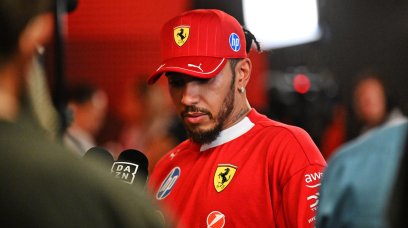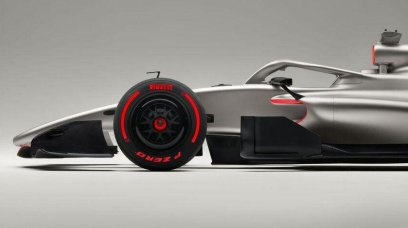Pirelli is assessing the potential impact on Formula 1 race strategy if the proposed tyre blanket ban for 2024 is approved. In a push to increase sustainability and reduce costs, F1's sole tyre supplier has proposed a ban on tyre blankets, starting from the 2024 season. A final vote is expected after the post-British Grand Prix tyre test. Multiple tests with the planned new rubber have been held, with the likes of George Russell and Charles Leclerc driving the proposed 2024 tyres – but World Champions Max Verstappen and Lewis Hamilton are against the proposals, with Hamilton calling the move potentially "dangerous" should it be approved. Should the ban be confirmed for 2024, it would mean teams would not have the undercut strategy trick available to them, as a driver attempting it would lose too much time bringing the fresh rubber up to temperature on the out-lap.
Pirelli assessing undercut threat
By using fresher tyres by stopping a lap earlier than a rival, drivers can attempt to gain track position on the car ahead. But if the new rubber takes longer to come into the peak operating window due to the lower temperatures, it could potentially close the undercut as a viable race strategy. Pirelli's motorsport boss Mario Isola admits the drivers won't be happy at the "different situation" should the ban be approved. "I know the drivers are not happy because this is a big change, and they will have to change their approach," Isola told media, including RacingNews365.com. "We know that the undercut is not working no more so it will be a different situation. "That's why for example during our development tests, we are also monitoring the out-lap sectors, sector per sector to understand at the very beginning of a run, what is the difference in terms of seconds per lap or second per sector. "We are trying to collect as much data as we can to supply useful information [to teams] to take the decision. "If the target is having a tyre with no blanket that is working exactly as the current one, I tell you, it is impossible. "It's not impossible just for us, it's impossible for anybody because if you go out with a cold tyre, you cannot have the same grip that you have now with 70 degrees of temperature. "Maybe in Bahrain it takes one corner because you have very aggressive tarmac and a high temperature and a layout that is helping to put energy into the tyre, but in Monaco, it [is harder], in [Austria] it will take more, so it is a different approach."
Safety overriding focus
WIth such a big change a possibility in the tyres, there are potential safety concerns over the new rubber, but Isola is firm in saying that Pirelli will not take risks. "The priority for us is safety first and we are not going to provide any tyre that is not safe," he added. "But the show is important and we need also in this analysis to understand what is the impact here, not just in warm-up, but in terms of level of degradation, peak of grip and these kinds of elements. "We need to simulate, together with the FIA and F1, some races and race situations to see what are the strategies. It may be that we discover that everybody is pushed towards a one-stop for many reasons. "When we talk about strategy, it's a mix of factors. It is the degradation of the tyre, the time you lose in the pit lane, and how difficult it is to overtake, because obviously, traffic has a different influence on the strategy. "We have always to consider the full package, as it is not just the tyre itself working on a car and on a circuit."
Most read







